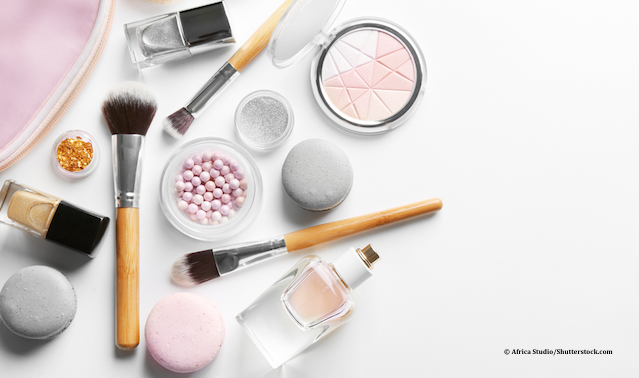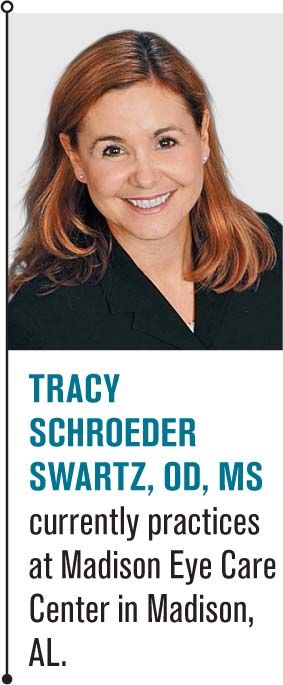Cosmetic dangers: Part 1-Popular cosmetics patients use
In Part 1 of her three-part series on cosmetic dangers, Tracy Schroeder-Swartz, OD, MS, FAAO, outlines what types of cosmetic products are available and what they do.


The views expressed here belong to the author. They do not necessarily represent the views of Optometry Times or UBM Medica.
Dangers found hidden in cosmetics have been receiving attention recently as the U.S. has been slower than other countries to ban certain substances. Commonly used cosmetics may contain certain ingredients that could pose health risks. In the interest of patient care, ODs need to be educated on possible side effects of cosmetic use.
Regulating cosmetics
The U.S. Food & Drug Administration (FDA) regulates cosmetic labeling under the authority of both the Federal Food, Drug, and Cosmetic Act (FD&C Act) and the Fair Packaging and Labeling Act (FPLA). If a cosmetic product is marketed for retail sale to consumers in stores, online, or via direct sales the ingredients must be listed in descending order of predominance.
Under the FPLA, ingredients must be listed by their “common or usual names.”1 A quick Google search shows that some common ingredients in cosmetics can be harmful, including parabens, mineral oils, sulfates, and benzalkonium chloride (BAK).
Previously from Dr. Schroeder-Swartz: Helping patients through the dry eye season
Under the FD&C Act, a product intended to diagnose, mitigate, treat, prevent disease, or affect the structure or function of the body is classified as a drug.2 The FDA issued warning letters to companies citing drug claims associated with eyelash/eyebrow preparations, noted on both product labeling and web sites.3,4
A Swedish medical products agency’s analyses of eyelash serums and growth products found prostaglandin analogues in as many as nine of the 26 products tested. In three of the products, prostaglandin analogues were not listed on the packaging.5
While the Swedish analyses may have caught your attention, other problems with cosmetics may go unnoticed. Given the uses of these products near the eyes, ODs should be familiar with commonly used cosmetics, typical ingredients, and dangerous substances found in these products.
Part 1 of this three-part series details what cosmetic products are available and what they do. For ODs who do not wear makeup or have never visited a Sephora store, it might be difficult to determine what the term makeup covers or how and why these products are used. For a better understanding, follow along with me on my daily makeup journey.
Not all patients will use all of these products. I personally use a face wash, moisturizer, beauty balm (BB) foundation, blush, tinted eye primer, and mascara. I have three kids, no time, a long day, and just don’t care that much.
Facial cosmetics
The makeup routine starts with a face wash. Do not use body soap. Recommend your patients avoid formulations which contain sodium lauryl sulfate (removes oil), fragrances (which may not be a scent but rather anything the manufacturer wants to put in the product), parabens (which prevent harmful bacteria and fungi from growing), oils (for moisture but clogs pores), and alcohols (to roughen the skin to promote penetration of another magic ingredient) should be avoided.
Cleansing is followed by applying astringents and moisturizers. Astringents may contain alcohol, apple cider vinegar, and/or witch hazel.
Related: 7 tips for safer lens wear with cosmetics
Witch hazel is a plant with anti-inflammatory properties. Its leaves contain tannins, oils, and other natural substances that reduce inflammation, contract the skin, and reportedly slow bleeding. They are used to remove oils and tighten skin.6
Astringents are typically followed by moisturizers, which may be cremes or serums. Many of these moisturizers contain mineral oil, which clogs pores.
Facial primers are used after astringents to ensure makeup stays in place during the day and into the night.
Foundation is applied to smooth out the skin tone and cover blemishes. Consider it liquid Photoshop. Foundation may be flesh colored, yellow, purple, or green to correct skin color.
Some people may elect to use BB cremes, which even skin tone and improve skin blemishes. BB creams contain antioxidants to help protect skin against free radicals. Following the rise of BB cremes came complexion correcting (CC) cremes, which address blotchiness, redness, or hyper-pigmentation in the skin. These formulas often contain lycopene to calm redness and vitamin C to promote skin radiance. Highlighters, contours, and blush may then be applied to shape the face.
Cosmetics around the eyes
Primer eye shadow ensures lid color does not fade or bleed. I recommended primers for my dry eye patients to hold eye shadow on the eye lid and prevent it from falling into the tear film. I particularly like tinted primers which stay on the lid and look like eye shadow. Eye shadow colors are applied next. These may be powder, which forms the shiny mud you see in the tear film, or cremes, which are less likely to drift onto the ocular surface.
Eyeliner defines the eyes and subtly changes the eye’s shape. It may be a pencil, liquid liner, or powder. Eyeliner may be applied to the lid below the lashes or along the lid margins. “Tightlining” is term used to describe painting the lid margin and is popular with makeup artists. “Tightlining” should be discouraged because it may clog the glands on the lid margin.
Related: Clinical performance of a new silicone hydrogel cosmetic lens
2017 was the “year of the eyebrow.” Females are painting eyebrows rather than going all natural. Pencils and cremes are used to thicken and darken eyebrows to make them seem more pronounced.
Eyelash enhancements
False lashes have become popular. They may be glued to the lid margin or surrounding lashes. According to a recent Facebook ad I saw, eyelashes can be even attached using magnets. Eyelashes can be built using fibrous mascara that I suspect is similar to the hair spray you see in ads on TV after midnight.
After the fake lashes, lash primers may be applied and are typically clear or white. Mascara may be waterproof, non-waterproof, lengthening, thickening, or curling. Mascara comes in a variety of colors and should be hypoallergenic but rarely is.
Cosmetic removal each day key
Every night, all makeup should be removed. Not removing all makeup may cause skin inflammation, breakouts, and significantly increase dry eye symptoms. Eye makeup remover should be used rather than baby oil, Vaseline, or soap. Some eye makeup removers still contain BAK and should be avoided.
Once all makeup is removed, wash face again, apply a second application of astringent, and then a nightly moisturizer.
Nightly moisturizers are typically thicker than daily moisturizers, and they are more likely to contain wrinkle removers such as alpha-hydroxy acids (AHA) and vitamin A. AHA-containing products cause exfoliation or shedding of the surface skin. The extent of exfoliation depends on the concentration and type of AHA, its pH, and other ingredients in the product. Retin-A formulations dry ocular skin and may exacerbate dry eye. 7
Now that you have a firm foundation of how patients may use cosmetics, Part 2 will discuss dangers found in cosmetics.
Related: Optometry on fleek
References
1. U.S. Food & Drug Administration. Labeling. Available at: https://www.fda.gov/cosmetics/labeling/. Accessed 1/17/18.
2. U.S. Food & Drug Administration. Warning Letters Address Drug Claims Made for Products Marketed as Cosmetics. Available at: https://www.fda.gov/cosmetics/complianceenforcement/warningletters/ucm081086.htm. Accessed 1/17/18.
3. U.S. Food & Drug Administration. Inspections, Compliance, Enforcement, and Criminal Investigations. Available at: https://wayback.archive-it.org/7993/20170111100912/http:/www.fda.gov/ICECI/EnforcementActions/WarningLetters/2011/ucm257013.htm. Accessed 1/19/18.
4. U.S. Food & Drug Administration. Inspections, Compliance, Enforcement, and Criminal Investigations. Available at: https://wayback.archive-it.org/7993/20170111100914/http:/www.fda.gov/ICECI/EnforcementActions/WarningLetters/2011/ucm251951.htm. Accessed 1/19/18.
5. Läkemedelsverket. Pharmaceutical ingredients in one out of three eyelash serums. Available at: http://www.dr-jetskeultee.nl/jetskeultee/download/common/artikel-wimpers-ingredients.pdf. Accessed 71/19/18.
6. WebMD. Witch Hazel: Uses and Risks. Available at: http://www.webmd.com/vitamins-and-supplements/witch-hazel-uses-and-risks#1. Accessed 1/17/18.
7. U.S. Food & Drug Administration. Alpha Hydroxy Acids. Available at: https://www.fda.gov/cosmetics/productsingredients/ingredients/ucm107940.htm. Accessed 1/17/18.
Newsletter
Want more insights like this? Subscribe to Optometry Times and get clinical pearls and practice tips delivered straight to your inbox.